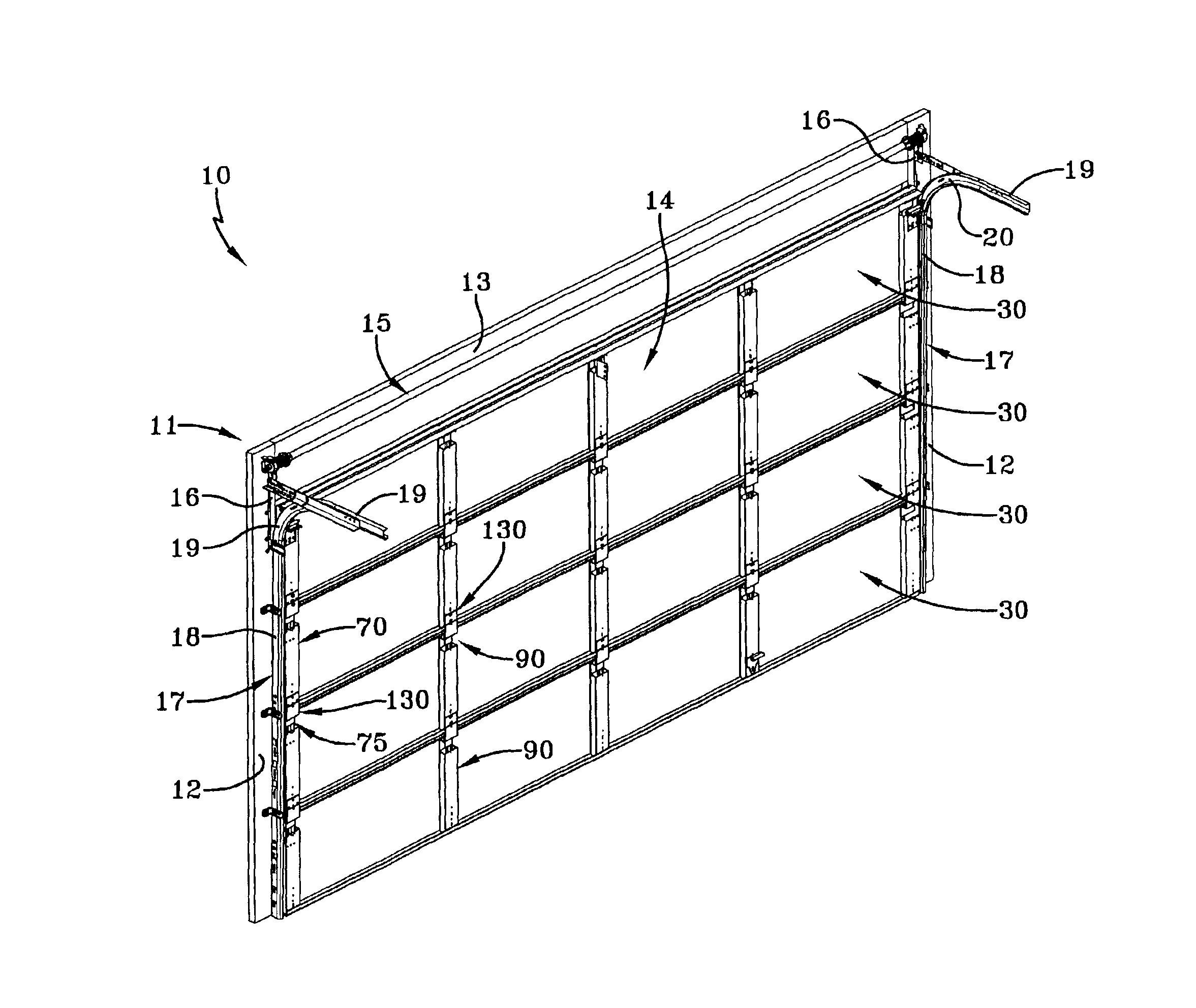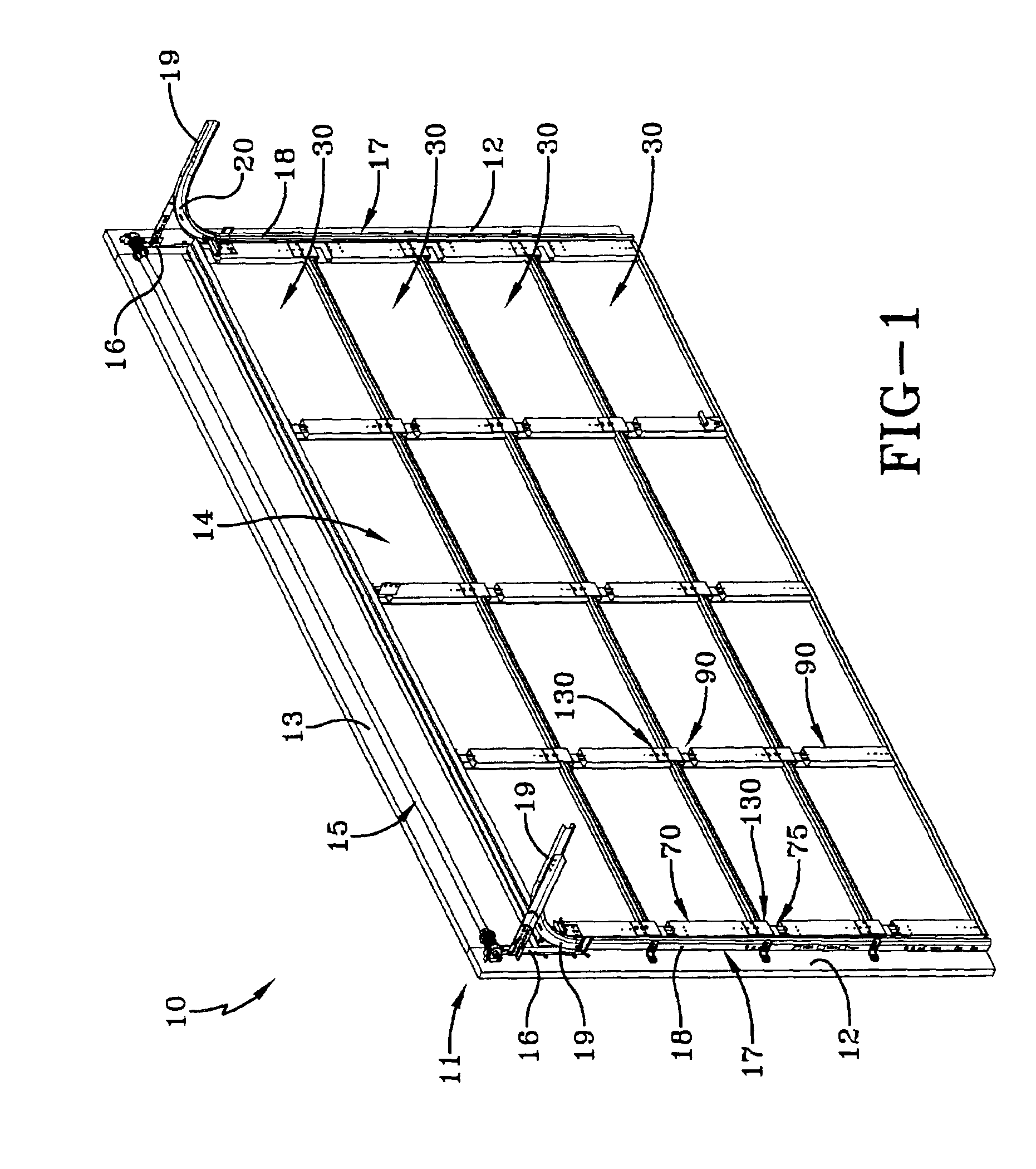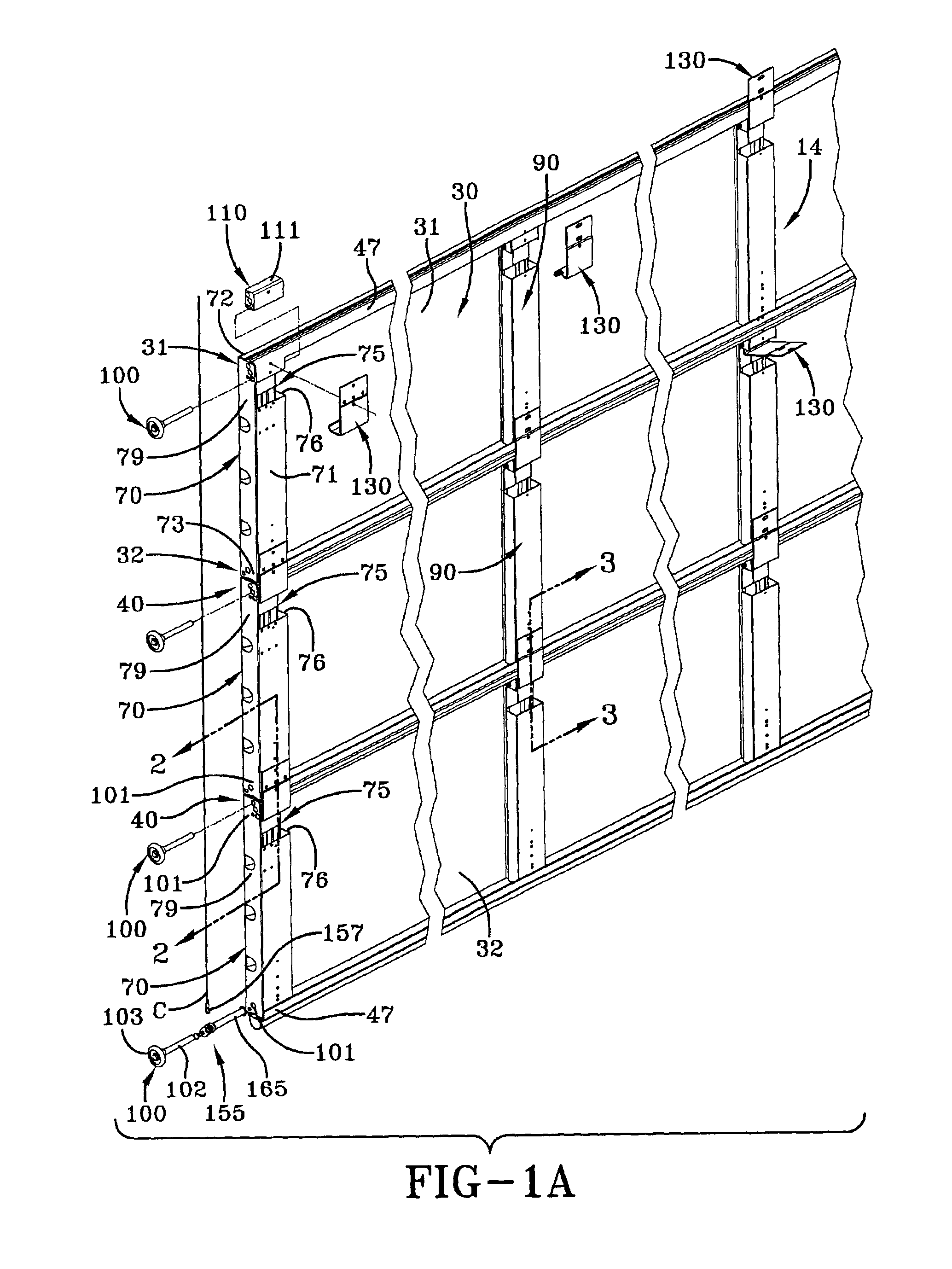Sectional door system
a sectional door and door body technology, applied in the direction of door/window protective devices, shutters/movable grilles, wing accessories, etc., can solve the problems of entrapment between the sections, troublesome methods, and more difficult hinge inserting
- Summary
- Abstract
- Description
- Claims
- Application Information
AI Technical Summary
Benefits of technology
Problems solved by technology
Method used
Image
Examples
Embodiment Construction
[0028]An upward acting insulated or uninsulated sectional door system embodying the concepts of present invention is generally indicated by the numeral 10 in FIG. 1 of the drawings. The door system 10 is positioned and mounted for opening and closing movement in a building, trailer or other structure by a peripheral door frame, generally indicated by the numeral 11. The frame 11 consists of a pair of spaced vertical jambs 12, that, as seen in FIG. 1, are generally parallel and extend vertically upwardly relative to a supporting surface such as the ground, a floor, or the bed of a trailer (not shown). The vertical jambs 12, 12 are spaced and joined proximate their vertical upper extremity as by a header 13 to thereby define the generally inverted U-shaped frame 11 for mounting a door, generally indicated by the numeral 14. The frame 11 may be constructed of wood, metal, or other relatively high-strength, rigid material for purposes of reinforcement, attachment to a building or vehicl...
PUM
 Login to View More
Login to View More Abstract
Description
Claims
Application Information
 Login to View More
Login to View More - R&D
- Intellectual Property
- Life Sciences
- Materials
- Tech Scout
- Unparalleled Data Quality
- Higher Quality Content
- 60% Fewer Hallucinations
Browse by: Latest US Patents, China's latest patents, Technical Efficacy Thesaurus, Application Domain, Technology Topic, Popular Technical Reports.
© 2025 PatSnap. All rights reserved.Legal|Privacy policy|Modern Slavery Act Transparency Statement|Sitemap|About US| Contact US: help@patsnap.com



